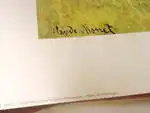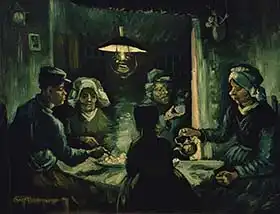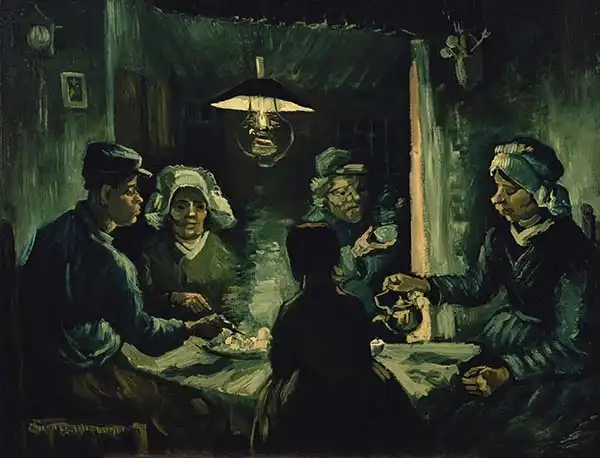About this finishing
Print. The image is printed on the top quality 10-ink HP Z9PS printer on HP matte 270 g / m2 paper. You can choose any size to an accuracy of 1 cm. A margin of 5 cm around the image is added to the size of the motif.


You can find a detailed description about our finishings
here.
The potato eaters
"Potato Eaters (Study)" (Dutch "De Aardappeleters") is a well-known painting by
Vincent Willem van Gogh that was created in 1885. This painting depicts a group of
people gathering to eat potatoes in a Dutch country house. The painting "Potato Eaters" shows five figures sitting at a table and eating potatoes. The three men and two women are dressed in simple, country clothing and have faces that express hard work and simplicity. Van Gogh used the contrast of light and shadow to emphasize the faces of the figures. The faces are illuminated while the rest of the scene remains in darkness. This effect creates an impression of intensity and draws attention to the characters.
The painting emphasizes the naturalness and simplicity of rural life. The characters are sitting together at a table eating potatoes, a common country food at the time. Although the painting is stylized, van Gogh tried to capture a realistic impression. The characters have detailed features and the texture of the clothing is faithfully displayed. The painting may carry a
symbolic meaning that reflects van Gogh's fascination with rural life and the work of rural people. The characters can be seen as a symbol of simplicity and hard work.
Prevailing color of this fine art print is dark and its shape is landscape. This image is printed on demand - you can choose material, size and finishing.
Vincent Willem van Gogh (1853-1890). Dutch painter belonging to
Post-Impressionism. His paintings (some 900 paintings and 1,100 drawings and sketches) are among the most famous in the world and are sold for exorbitant sums (except for those in our shop).
Parisian Impressionists He lived in Paris from 1886 and was influenced by the use of bright colours - most of his works were painted during this period. In his paintings, Gogh uses contrasting colours (often blue and orange - he said that I want to use colours other contrasts to each of them shone even more to contrast a man and a woman). He was known for his excesses and amputated an ear after the break-up of his friendship with
Gauguin. There is a lot of speculation about this incident (he possibly suffered from heavy metal poisoning from paint that had caused mental problems). In 1890, unfortunately he committed suicide.


